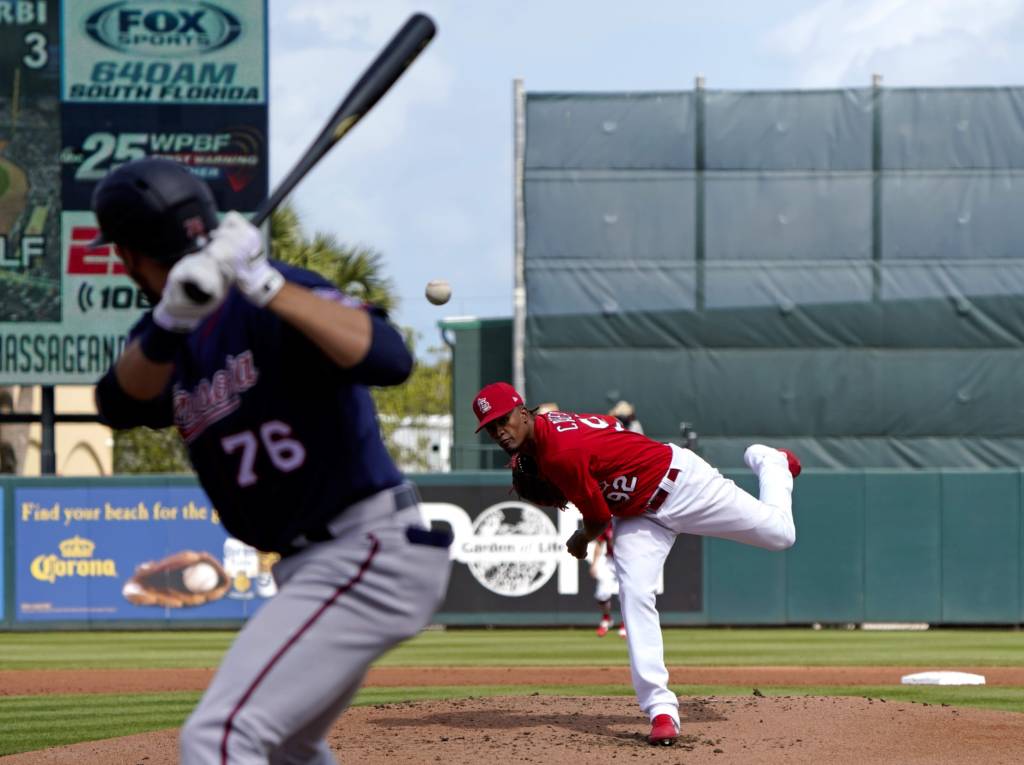
The Minnesota Twins are expecting big things from Alex Kirilloff. The path to playing time is wide open for the former first-round pick, and with a starting spot available in left field, there’s a scenario where Kirilloff becomes an important part of the lineup.
This is a new trend in baseball where several top prospects make an immediate impact. With Pete Alonso, Juan Soto, and Cody Bellinger becoming instant stars, young players have thrived across the league. But the trend hasn’t found its way to Minnesota yet.
The Twins have plenty of homegrown talent, but it took years to develop. When key prospects were forced into a major role immediately, they failed to live up to expectations.
A primary example was Byron Buxton. Hailed as the Twins’ next superstar, Buxton was expected to make an immediate impact after hitting .299/.375/.500 in the minors. But it took him years to figure things out at the plate.
Buxton struggled after being called up, hitting .209/.250/.326 in 46 games as a 21-year-old in 2015. In his first four seasons in the majors, Buxton hit .230/.385/.387 and struck out in 31% of his plate appearances. Although he brought Gold Glove defense to the outfield, he didn’t start hitting until the past two seasons.
Between 2019 and 2020, Buxton has hit .250/.299/.534 while lowering his strikeout rate to 25%. Still, he has battled injuries and has yet to become the superstar he was projected to be.
Such is the case for many of the Twins’ top prospects, historically. Aaron Hicks and Carlos Gomez were two players who landed in Baseball America’s Top 100 rankings but took time to find their footing at the major league level.
Hicks hit .276/.379/.431 through the minor leagues before being called up in 2013 but started his career 3-for-53 at the plate. Although Hicks had some productive moments, he had his breakout after being traded to the New York Yankees prior to the 2016 season.
Gomez was acquired in the 2008 trade that sent Johan Santana to the New York Mets and also needed time to develop. He hit .248/.293/.352 during his two seasons with the Twins before being sent to the Milwaukee Brewers for J.J. Hardy.
In both cases, the Twins didn’t see immediate results and flipped them to another team, only to see Hicks and Gomez thrive in another uniform and became reliable major league players.
Even some of the prospects who panned out needed time. Max Kepler slashed .281/.363/.446 in the minors but hit .243/.309/.424 during his rookie season in 2016. Three years later, Kepler hit 36 home runs as part of the Bomba Squad.
Jason Kubel had a similar path after destroying the Twins’ system in the early 2000s. His progress was stunted by a multi-ligament knee injury in 2005, and he needed a year to get acclimated, hitting .241/.279/.386 during his rookie season in 2006 and then slashing .273/.335/.450 the next year.
History tells us there’s no certainty Kirilloff will be a star right away, but some players have broken the trend recently.
For every Buxton, there has been a Miguel Sano, who looked like a star immediately after being called up in 2015. He hit .269/.385/.530 in 80 games during his rookie season and has been a key part of the Twins’ lineup ever since.
Jorge Polanco also had an immediate impact, hitting .282/.332/.424 during his rookie season in 2016. While his numbers dipped in 2017, he has been entrenched in the lineup and became an All-Star in 2019.
If Kirilloff can produce at a similar level, the Twins will be just fine in left field. But for fans starving for a homegrown superstar, they’ll be hoping they can match the impact of Joe Mauer and Justin Morneau.
Mauer became the top prospect in baseball in 2003 and the Twins’ everyday catcher the following season after A.J. Pierzynski was traded to the San Francisco Giants. Mauer suffered a knee injury early in his rookie year but still produced a .308/.369/.570 line in 35 games. The following season, he hit .294/.372/.411 in 131 games.
Mauer wasn’t a superstar right away, but he set the stage for his first All-Star appearance in 2006. An MVP year followed in 2009. Now Mauer’s No. 7 is hanging to the left of where Kirilloff will be playing at Target Field this season.
Morneau also became an instant fixture for the Twins in 2004, hitting .271/.340/.536 with 19 HR and 58 RBI. Although he regressed in 2005 (.239/.304/.437), he rebounded in 2006 (.321/.375/.559) and was named the American League MVP. Morneau went on to be a four-time All-Star and win a batting title with the Colorado Rockies in 2014.
What does this all mean for Kirilloff? It depends on what you’re looking for.
The Twins don’t need Kirilloff to put up Mauer-Morneau numbers out of the gate. A more realistic benchmark would be to replace Eddie Rosario’s .276/.300/.500 line from last season and provide steady defense in left field. If Kirilloff can accomplish that, his rookie year will be a success.
But as we laid out here, it’s been a long time since a prospect has had a superstar impact right away. However, Kirilloff’s minor league line of .317/.365/.498 and his performance during the Twins’ wild card series last fall should not cull the optimism surrounding him.
"impact" - Google News
March 02, 2021 at 05:31AM
https://ift.tt/3e05sRi
Can Alex Kirilloff Buck the Trend and Make an Instant Impact? - Zone Coverage
"impact" - Google News
https://ift.tt/2RIFll8
https://ift.tt/3fk35XJ
Bagikan Berita Ini
















0 Response to "Can Alex Kirilloff Buck the Trend and Make an Instant Impact? - Zone Coverage"
Post a Comment